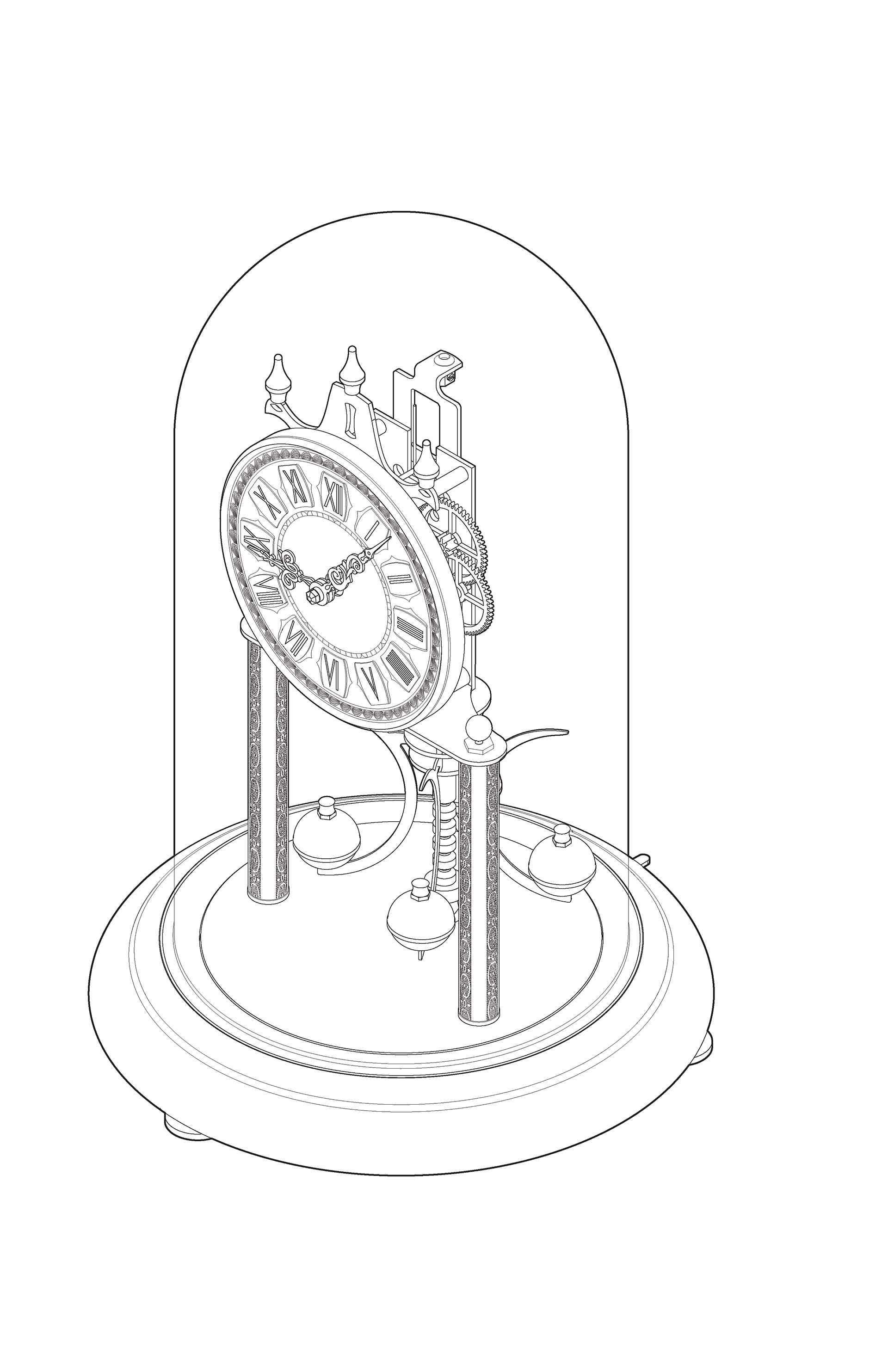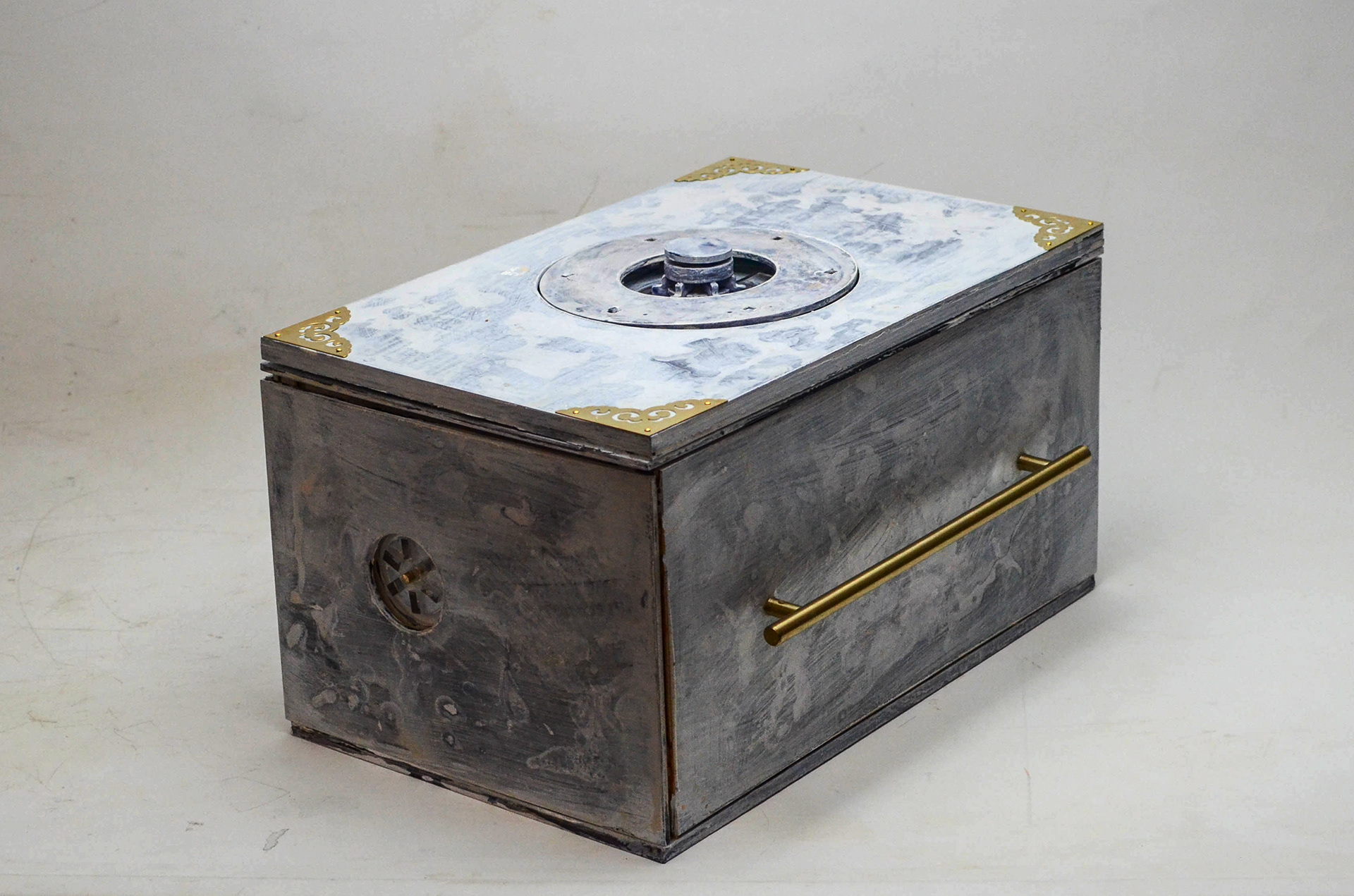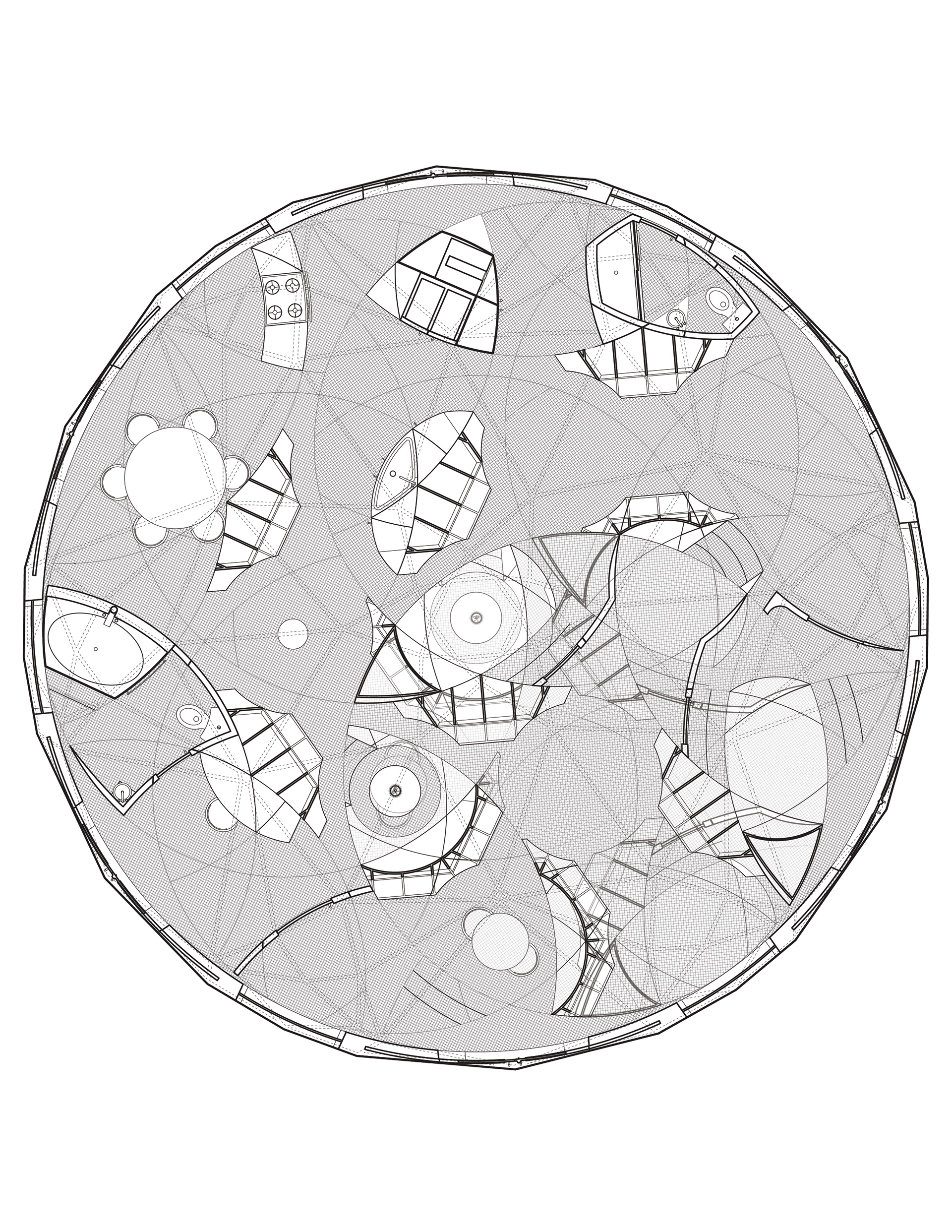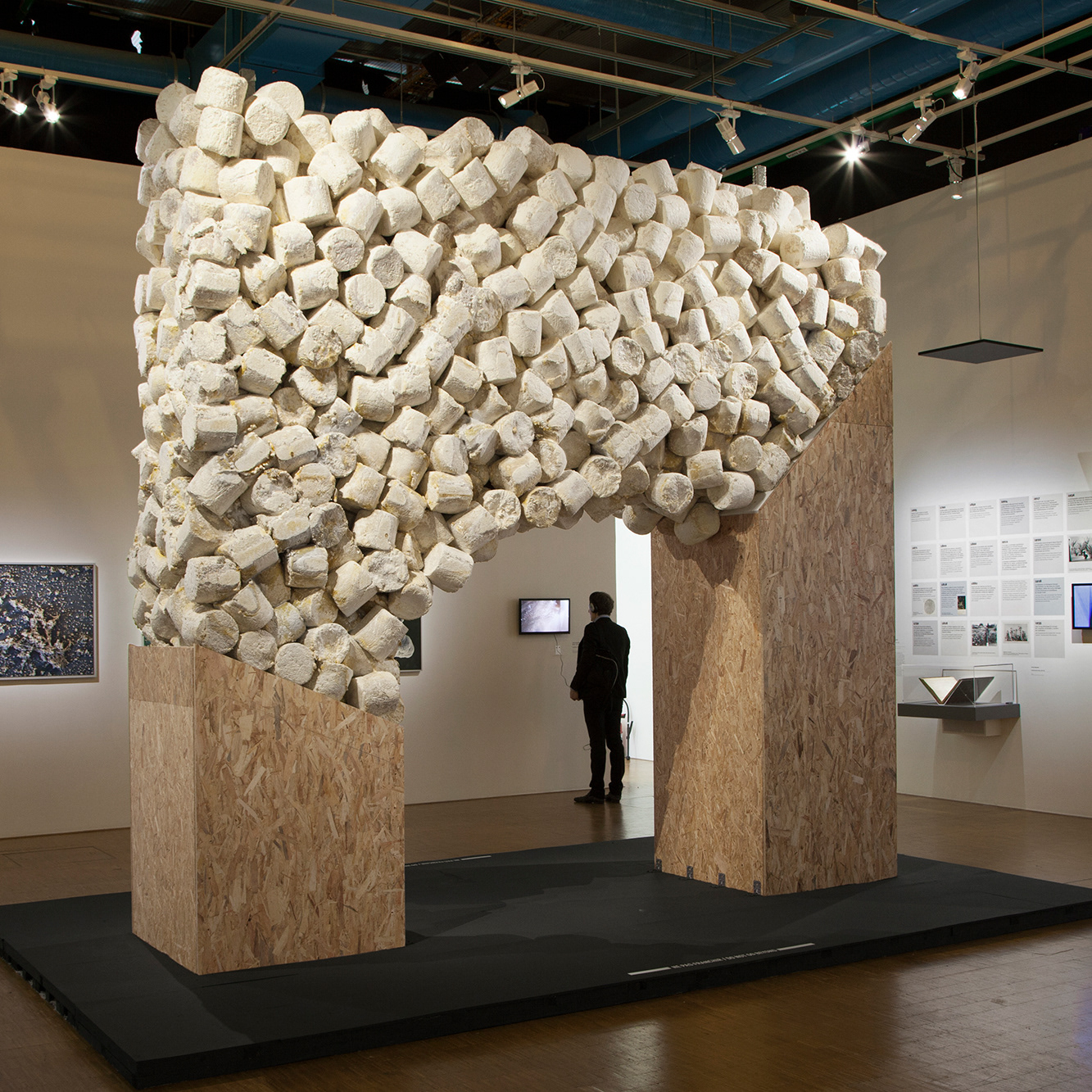Critic: Laurel Broughton
Collapsing the object-subject relationship, everyday items become protagonists. Choosing a broken clock as the client, a series of exercises were undertaken culminating in the design of a house built not for humans, but rather for the clock itself.
The floor of the house is sliced into fragments forming six overlapping disks. In this way, the domestic program is discretized into a collection of representative objects. The disks rotate on a series of rails beneath the floor at a rate of one foot per minute, and over time, the plan is redistributed throughout the home. Through this mechanism, the house becomes a kind of surrogate timekeeper for the clock. The initial rational order of the home devolves into derangement, becoming a material performance of chaos, and the end of time.
































